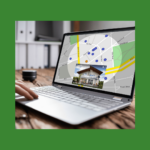The Perils of Price Per Square Foot
The NYC real estate market has never been more transparent than it is today. This is due to the volumes of useful data available on free, user-friendly websites like Streeteasy, ACRIS and GIS Map. With all this data at their fingertips, homebuyers have never been more well-informed. With the ability to search for real estate at their convenience, they pore over listings, sales histories, building comps, neighborhood comps, photos, finishes, renovation permits, articles, essays. Buyers look at everything they can to help them understand the historically opaque NYC residential real estate market.
There is one commonality that every buyer comes back to when discussing the value of an apartment – the price per square foot.
This makes a lot of sense on the surface. It makes sense to try to reduce real estate to an apples-to-apples base metric (hey, every apartment has square feet and costs money). This can help buyers wade through broker babble. Broker marketing mumbo jumbo often distracts from the fundamental truth of hard price per square foot data.
But this would be wrong. You can still ignore the broker babble, but do not rely solely on the square footage numbers published in real estate listings. There is no uniform method of measuring square footage, and you will not get an apples-to-apples comparison.
What is Accurate Square Footage?
In recent real estate news, there is an article about the celebrity studded new condo conversion 443 Greenwich Street and how the usable square footage in each apartment is actually 15% less than the square footage that is published in the listing. Usable square footage is the space you will be living in. The square footage that is published in condominium listings is taken from the offering plans for those buildings.
These plans have been approved by the NYS Attorney General’s office – the governmental authority which oversees condominium sales. The law in New York State allows condo developers to tell buyers they are purchasing materially larger apartments. If the offering plan states the method of measurement and a disclaimer that you are purchasing more square footage than you can use, this is ok.
How Do Developers Measure Square Footage?
Nearly all developers today measure square footage from the outside of the building’s exterior wall. However, buildings from different eras, as well as re-purposed buildings that once served different uses, yield different results. This is because building materials and building techniques have changed over time. In the 443 Greenwich Street example, the building was once a bookbindery built in the 1880s. As a result, it has far thicker walls than a typical ground-up new development would have today. This leads to even greater inflated square footage calculations of corner units. After all, corner unit have two sets of exterior walls, relative to a unit with only one exterior wall.
In a more egregious distortion, developers often include a unit’s proportionate share of the building’s common elements in the calculation. Ever see a condo listed at 750sf when, based on the room dimensions, it’s unlikely more than 550sf? That’s the combination of the exterior square footage and common elements.
Sometimes, when you look at a condo listing from an older post-war building, the square footage quoted appears to make sense. That’s because condos from different eras used different methods to measure square footage. In the 1980s, condominium ownership of apartments began to gain popularity relative to co-op ownership. At the time, square footage was measured in a way that far more accurately described the usable square footage of apartments.
How Do You Review Co-op Square Footage?
Finally, let’s discuss co-op square footage. The square footage of co-op units is rarely found in real estate listings since it is not typically published in the co-op’s offering plan. Lawsuits filed by remorseful buyers over allegedly overstated square footage has deterred brokers from calculating it and including it in listings. This is frustrating for buyers who want to know what they’re buying. Ideally, they would compare it to a comparable condo listing that has the square footage listed.
All this goes to say that, unless you are comparing condos in the same building, a comparison of price per square foot will likely be a flawed calculation. I advise you not to rely on it. Without a uniform method of measurement, a market that is making huge strides toward transparency remains opaque. And this is perhaps the most important piece of information in a listing. You cannot compare apples to apples without having a professional survey performed to measure the interior usable square footage. While not impossible, this is impractical, at best, in a market where decisions often have to be made in a very short amount of time.
At Digs Realty, we conduct a detailed pricing analysis that focuses on many factors in order to determine true value. We do not rely solely on square footage in a vacuum.
Contact us for more information on how we arrive at fair market value.




